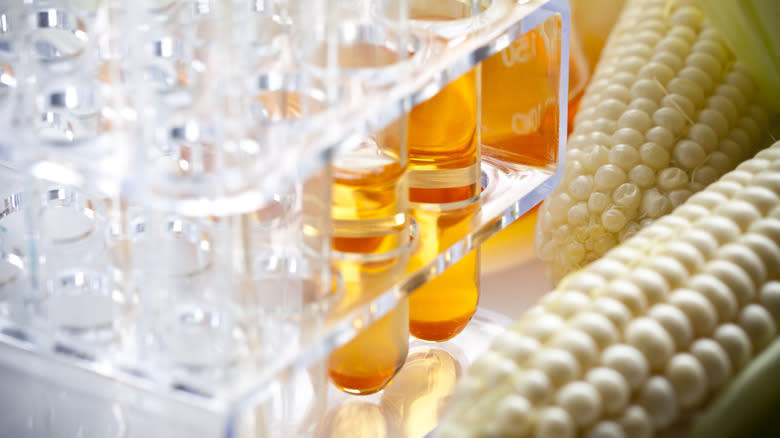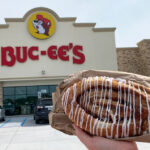Dairy Queen, a beloved fast-food chain, is famous for its “hot eats and cool treats,” but have you ever stopped to consider why they call their signature product “soft serve” and not ice cream? It turns out, there’s a legal reason behind it. According to the U.S. Food and Drug Administration (FDA) standards, what constitutes ice cream comes down to milkfat content. To be labeled as ice cream, a product must contain at least 10% milkfat. Dairy Queen’s soft serve, however, contains only 5% milkfat.
While it boasts the creamy texture, rich flavor, and icy cold serving temperature (precisely at 18 degrees Fahrenheit) we associate with ice cream, DQ’s frozen dessert doesn’t meet the official milkfat criteria. Hence, the designation “soft serve.” So, what exactly goes into this iconic treat? The ingredient list includes: milkfat and nonfat milk, sugar, corn syrup, whey, mono and diglycerides, artificial flavor, guar gum, polysorbate 80, carrageenan, and vitamin A palmitate.
Looking at this list, you might notice a few more components than you initially expected. Some of these ingredients may even ring alarm bells due to negative press. Rest assured, every component in DQ’s soft serve is FDA-approved. However, understanding what you’re consuming is always a good practice, so let’s delve deeper into some of these ingredients.
The Role of Carrageenan in DQ Soft Serve
 Carrageenan derived from red seaweed on a sandy beach
Carrageenan derived from red seaweed on a sandy beach
Carrageenan derived from red seaweed, a natural source for food thickening agent.
Carrageenan might stand out on the DQ soft serve ingredient list, and it’s an ingredient that has faced some scrutiny. Carrageenan is a food additive used as a thickener and gelling agent. It’s derived from red seaweed, a natural source that has been used in cooking for centuries.
The controversy around carrageenan started gaining traction after a 2001 report published in Environmental Health Perspectives. This report suggested a link between carrageenan and gastrointestinal issues in animal studies, with the author, J.K. Tobacman, even raising concerns about potential carcinogenic effects. Despite a 2002 study in Critical Reviews in Toxicology which presented contradictory findings, the public perception of carrageenan was negatively impacted, and this perception has lingered.
The reality is that carrageenan is generally recognized as safe for consumption by the majority of people. However, individuals with pre-existing gastrointestinal sensitivities might consider limiting their intake of DQ soft serve. A personal experiment could be to observe your body’s reaction by consuming DQ soft serve in isolation, while maintaining a diet of otherwise “safe” foods, to identify if it causes any discomfort.
Decoding Other Ingredients in Dairy Queen’s Soft Serve
 Corn kernels and vials of corn syrup, illustrating a key ingredient in processed foods
Corn kernels and vials of corn syrup, illustrating a key ingredient in processed foods
Corn kernels and corn syrup vials, representing corn syrup as a common sweetener in food production.
Beyond carrageenan, DQ soft serve contains other notable ingredients. Polysorbate 80 is present as an emulsifier, preventing ingredient separation and also acting as an anti-melting agent to maintain the soft serve’s form. Mono and diglycerides work alongside polysorbate 80, further enhancing the emulsification process, contributing to the smooth texture.
Corn syrup, another ingredient on the list, is a liquid sweetener derived from corn. It’s composed of glucose, a type of sugar, and is added to soft serve not only for sweetness but also for textural benefits. Corn syrup helps prevent crystallization during freezing, ensuring a consistently smooth product. While it contributes to the enjoyable texture and taste, health guidelines suggest limiting corn syrup intake to under 50 grams daily due to links to potential health issues like high blood pressure and type 2 diabetes if consumed excessively.
Vitamin A palmitate, or retinyl palmitate, is included in DQ’s soft serve because it’s a low-fat dairy product. This ingredient is a form of vitamin A added to replace vitamins that are lost when milkfat is reduced. Guar gum collaborates with carrageenan as a thickening and emulsifying agent, further enhancing the soft serve’s texture.
Finally, the term “artificial flavors” is listed, which can seem vague. However, it’s important to know that all artificial flavors used in food products, including DQ’s soft serve, must be FDA-approved. This ensures they meet safety standards for consumption.
In conclusion, while Dairy Queen’s soft serve might not technically be “ice cream” due to its milkfat content, its ingredient list reveals a carefully formulated product designed for a specific texture, flavor, and shelf life. Understanding these ingredients allows consumers to make informed choices about enjoying this popular treat as part of their diet.

